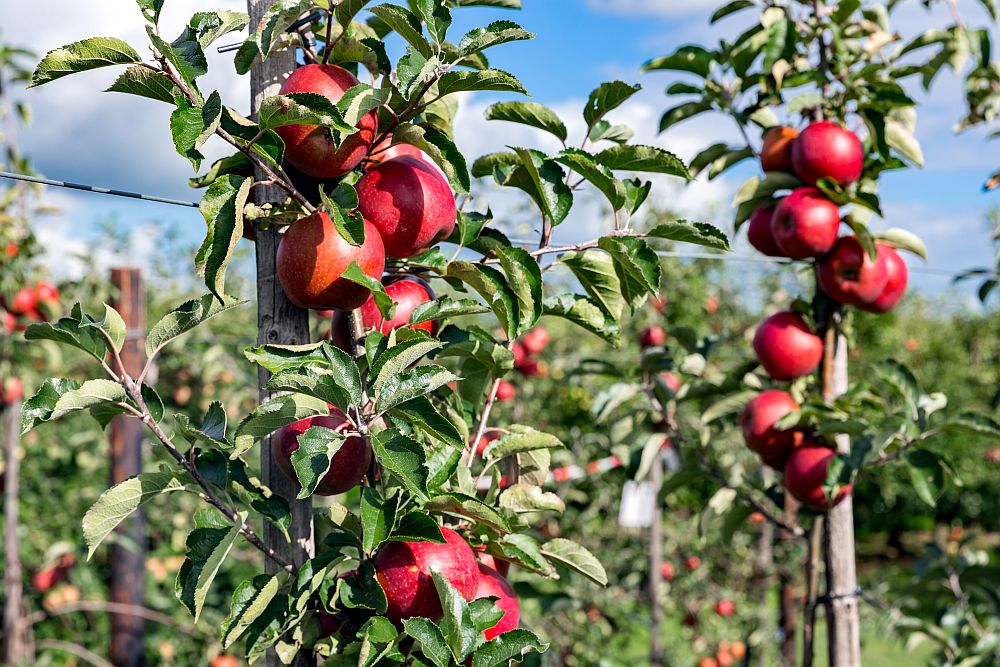
[Image above] Example of a building in Rome painted with a titanium dioxide-based “smog eating” paint. Though TiO2 photocatalysts are widely used, some researchers raised concerns that these paints may do more harm than good. Credit: Jamie Heath, Flickr (CC BY-SA 2.0)
Titanium dioxide, also known as titania (TiO2), is a popular material used in many consumer and technical applications, from sunscreens and pigments for paints to coatings for implants and gas sensors.
In many applications, TiO2 serves as a photocatalyst. When its surface is irradiated with ultraviolet light, one of two reactions occurs: 1) photoinduced redox reactions of adsorbed substances, or 2) photoinduced hydrophilic conversion of TiO2. Compared to other photocatalytic materials, TiO2 has the advantages of high catalytic activity, excellent chemical stability, low material cost, and minimal toxicity to humans.
During the 1980s oil crisis, TiO2 was investigated as a promising method for hydrogen production because of its high reaction efficiency. However, despite its high reaction efficiency, TiO2 typically only absorbs ultraviolet wavelengths from sunlight due to its large band gap energy (3.2 eV), meaning large quantities of energy cannot be extracted in this way.
Though researchers now are investigating ways of shifting the absorption onset of TiO2 to the visible light region, with doping and morphological modifications being the two main approaches, interest at that time turned more toward the oxide’s potential as a purification method for wastewater and polluted air.
During the 1990s, Japanese researchers developed light-cleaning materials coated with TiO2 photocatalysts. One of the first commercial products was a self-cleaning cover glass for sodium lamps used in tunnels. As the glass becomes dirty from vehicle exhaust, its light intensity decreases. Fortunately, sodium lamps emit enough UV light to trigger the photocatalytic reaction for removing the exhaust coating.
In 1995, Japan’s TOTO Ltd. began manufacturing antibacterial ceramic tile coated with photocatalytic TiO2 containing copper and/or silver. Alone or in combination, these metals promote the destruction of bacteria like E. coli under very weak UV light.
Nowadays, TiO2 nanoparticle coatings are being tested on various substrates for floating photocatalysts used to treat wastewater. One study used a cork substrate because the material is lightweight, has low heat conduction, and high corrosion resistance. When coated with TiO2/polyvinyl alcohol at a mole ratio of 1:8, the cork photocatalyst degraded 98.43% of methylene blue (MB) under a visible light source, performing better than under sunlight irradiation (77.09% of MB removal) for 120 min.
Other substrates include expanded perlite and hollow glass microspheres. In the first case, perlite was coated with B–N–TiO2 using the sol-gel method, and the resulting photocatalyst achieved 94% efficiency degradation of rhodamine B dye for 3 hours under visible light irradiation. Similar efficiencies were achieved for methylene blue when glass microspheres were coated with TiO2/Ag3PO4 particles, using (3-aminopropyl)tiethoxysilane as a binder. Such floating photocatalysts can be recovered and reused.
Two-in-one: TiO2 for simultaneous hydrogen production and pollutant degradation
During the past decade, research on TiO2 for hydrogen production has focused more on bifunctional TiO2 photocatalysts that simultaneously achieve hydrogen production and pollutant degradation. Below are some recent examples of such studies.
– In 2009, Japanese researchers showed that a thin alumina overlayer on dye-sensitized TiO2 markedly enhanced the visible light activities for production of hydrogen and dechlorination of CCl4.
– In 2014, Korean researchers showed TiO2 nanoparticles modified with platinum and Nafion achieved the simultaneous production of hydrogen and degradation of rhodamine B (RhB, an azo dye that accounts for more than 65% of total dye production).
– In 2018, Chinese researchers showed composite catalysts consisting of graphene quantum dots, manganese-and-nitrogen-doped TiO2, and graphitic carbon nitride (GQDs/Mn-N-TiO2/g-C3N4) successfully achieved hydrogen production and organic pollutant degradation.
Other potential environmental applications include
- Water treatment of hydroponic installations. Organic contaminants are easily decomposed without destroying the nutrients.
- Treatment of soil containing volatile organic compounds. Sheets of corrugated paper containing TiO2 and activated carbon powders cover the soil and through several reactions volatize the pollutant gases.
- Mitigation of the heat island effect. Buildings coated with TiO2 photocatalysts are sprinkled with water to help cool the buildings without forming mildew.
- Reduction of air pollutants. Nanoparticles of TiO2 are applied as coatings on existing buildings or incorporated into construction materials to help remove pollutants from the surrounding atmosphere.
However, some researchers have raised concerns that TiO2-based photocatalytic paints may do more harm than good.
In 2013, Indiana University environmental scientists showed that in real-world conditions, TiO2 coatings are likely to convert ammonia to nitrogen oxide, the key precursor of harmful ozone pollution. In a university press release, Jonathan D. Raff, assistant professor in the School of Public and Environmental Affairs at IU Bloomington, says other studies missed the effect on ammonia because they investigated reactions that occur with high levels of emissions under industrial conditions, not the low levels and actual humidity levels typically present in urban environments.
In 2017, Chinese and French researchers showed that TiO2-based photocatalytic paints may release significant quantities of nanoparticles and volatile organic compounds such as formaldehyde over their lifetime. “The issues presented here challenge the usefulness of the titanium dioxide-based photocatalytic paints as a remediation technology to improve urban and indoor air quality,” says first author Delphine Truffier-Boutry from Grenoble Alps University in a press release on the study.
Various groups have explored developing “safer-by-design” photocatalytic paints to mitigate these potential harms. For example, French and Romania researchers proposed coating TiO2 nanoparticles with a combination of biomolecules (lysine, deferoxamine, dopamine) and polymers like polyacrylic acid and polyethylene glycol. These nanocomposites have better stability in water compared to conventional TiO2 nanoparticles, so should be less likely to degrade.
Author
Laurel Sheppard
CTT Categories
- Environment


